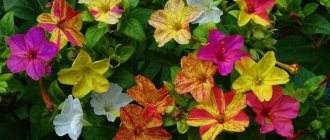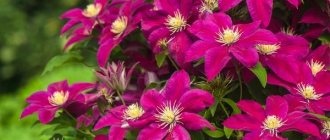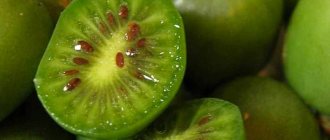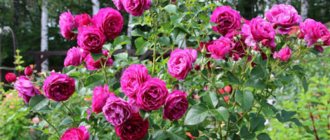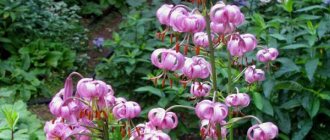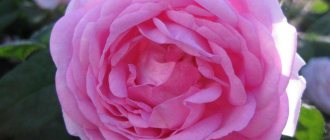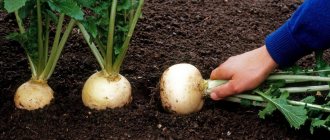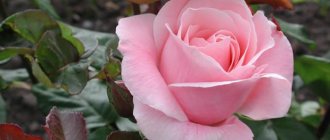Hosta is a popular plant with a dense rhizome. It is often used to decorate parks and shady courtyards. The large foliage of the perennial serves as decoration for personal plots, flower beds or gardens.
One of the main features of the blue hosta is its foliage, which has a very unusual bluish tint; florists use it to create unusual bouquets and compositions. The blue hosta is popular among landscape designers due to the fact that it can be used to decorate flower beds in an original way.
Characteristics and description of the plant
Blue hosta is a ground cover plant and can serve as protection for itself and neighboring cultivated plants from weeds. It grows naturally in the Far East, Korea and China. It is considered sacred to the Japanese and has been grown in gardens for thousands of years. Previously, tradition did not allow residents of eastern countries to import hosta abroad, therefore in Europe they learned about this perennial only in the 18th century.
The blue hosta looks very unusual. Its leaves are heart-shaped and quite large in size. A waxy coating gives the leaf plate an interesting blue-green color. It becomes less noticeable when exposed to sunlight. The plant blooms in September. In the photo, the hosta, a plant with bright foliage, in its blooming state seems to be a real queen of the garden. Inflorescence - bells of lilac, white or lilac color collected in a brush. Flowering lasts from June to October. When all the buds wither, the peduncle must be removed.
Using hosta in landscape design
Hostas are versatile plants for shady areas. They get along well with most plants and are low maintenance. The plant is not picky about soil and tolerates lack of light well. Hosta is combined with ferns, aquilegia, lungwort, astilbe and other flowers. Particularly charming is the composition of this perennial and coniferous plants, as well as group planting next to fountains, artificial waterfalls or around a pond. Thanks to the many varieties, you can use your creativity and combine different plant shapes with each other, coming up with unusual combinations. Different varieties of blue hostas and low green shrubs look good together. Large bushes are often planted on borders and paths, combining them with tall plants. Beautifully flowering perennials beautifully set off the unusual color of the leaves of the blue hosta. You can grow hosta as a container plant, moving it around the garden.
Blue hosta: planting and care in open ground
Planting hostas in spring begins with selecting a location. When planted in a sunny area, the leaves lose their bluish tint and become simply green. Therefore, you should choose partial shade. The perennial prefers places under the canopy of large plants or trees. Where to plant blue hosta? It does not develop well on sandy and loamy soils. The ideal soil is slightly acidic and moist, but a thick layer of drainage should be placed in the planting hole. A place for the plant should be chosen that is protected from drafts. When planting in groups, the distance between plants should be at least 80 cm. Water them only at the root, otherwise the leaves can be damaged.
Landing Features
For planting, you can purchase a bare-rooted cutting or a young plant planted in a container. In the first case, it is better to plant funkiya in the spring (April), in the second - throughout the summer
When purchasing, pay close attention to the quality of the product - there should be no foreign stains or “mosaics” on the leaves.
A lack of light will make the leaves not so bright, and direct sunlight can cause burns.
The plant prefers fertile soil, but can grow on any soil with a neutral or slightly acidic reaction. In case of dangerous proximity to groundwater, before planting, it is necessary to build an embankment and lay drainage.
Dig a hole 50-70 cm deep and wide, lay drainage from pebbles or broken bricks. Next steps:
- The soil is mixed with compost and the hole is filled to a third, then filled with a bucket of water.
- The container seedling is rolled over along with the lump (the plant with an open root system is carefully placed on a hill of soil mixture, and the roots are spread along the slopes) and watered again.
- Fill in the remaining substrate and compact it, and mulch on top.
Feeding the hosta
The plant acquires a decorative appearance in the third year of life. The leaves turn blue at two years. In fertile soil, perennials will need to be fed no earlier than a year after planting. In the fall, it is enough to mulch the soil around the plant with compost. If the plant lacks nutrients or grows in poor soil, granular fertilizer is used to feed it, scattering it around the bush.
You can feed the blue hosta until mid-summer, otherwise it will only increase its green mass and not bloom, and will not have time to stop growing before the onset of frost. The soil around the plant is constantly moistened so that the foliage retains its decorative appearance and does not begin to darken at the edges. You need to water early in the morning, lifting the foliage. Then the ground is mulched - this will retain moisture inside. To ensure that the perennial looks neat and does not lose its shape, young flower stalks are removed. The leaves are cut off in late autumn: new ones will appear in the spring.
Varieties of blue hostas
In the photo, the hosta, a blue plant, often stands out from other perennials. That’s why landscape designers love to use it for their work. There are many interesting varieties of this perennial, and you can plant several different blue hostas in your garden at once.
Classic varieties include:
- Halcyon is a bush with embossed heart-shaped leaves, up to 50 cm high. The flowers are lavender in color. Prefers partial shade, but can withstand a sunny location.
- Blue Angel is a large plant, up to 90 cm high, leaf size 40x30 cm. Prefers partial shade. The leaves are corrugated, very large, with a bluish coating. The flowers are similar to hyacinths, lavender in color, and have a pleasant scent.
- Love Pat is a slow-growing shrub with dense blue leaves. Height - 60 cm, lavender flowers.
- Blueberry Ala Mode is a blue hosta with a white border around the edge of the leaf. The name translates as “blueberry ice cream.” Medium-sized bush, rounded, grooved leaves.
- Queen Of The Seas is a plant up to 60 cm high, can grow on the sunny side, the flowers do not smell. The leaves are wavy, with toothed edges, dense and beautiful.
- Canadian Blue - Canadian blue hosta, compact variety. The dimensions of the bush are 30x40 cm.
- Parisian Silk is a low but wide bush that prefers a shady location. The foliage is round in shape, silver-blue in color. Blooms for a long time, with pink bells.
- Smoke Signals - the bush is distinguished by pointed leaves elongated upward. Can grow in direct sunlight.
- Blue Mammoth is a large plant with very beautiful wide, rounded leaves.
- Neptune is a variety with unusual pointed, corrugated foliage. Very loved by pests, especially slugs.
- Blue Dolphin - Heart-shaped leaves with deep veins.
- Pewterware is a bush with dense, rounded, bluish-green leaves.
- Big Daddy, or Big Daddy, is a variety of blue hosta, the description of which shows that it is one of the strongest and hardiest. It can reach a meter in width and 60 cm in height. The leaves are round, wrinkled, very dense and matte. It develops slowly and prefers shady areas. In a sunny location, the leaves lose their color a little.
Landing Features
The success of growing a perennial depends on several factors - the quality of planting material, location and soil composition.
Hosta blue angel
Deadlines
The best time for planting seedlings is from mid-April to the second ten days of May, when the ground has warmed up well and the threat of return frosts has passed. This way you will eliminate the risk of freezing of the delicate and not yet strong root system of young plants.
Place and soil
In the wild, the bush grows in shady forests, near lakes, and on moist soil. He needs to be provided with the same conditions in the garden.
It is better to plant under tall trees, bushes, near a fence or gazebo, where there is complete shade in the afternoon. In the sun, its delicate foliage will quickly fade and turn yellow.
Grows well in loose, well-drained soil with a high humus content
It is important that the acidity level is neutral. Therefore, if necessary, the soil is deoxidized with chalk, slaked lime or dolomite flour - 350 g per 1 m²
If the soil is lumpy and heavy, it is necessary to improve its structure with sand, perlite or vermiculite - 2 buckets per 1 m².
Before planting, the area is cleared of garden debris, dug deeply and leveled.
Seedling preparation
You can buy planting material at a gardening store. Choose seedlings with unopened buds - they take root better after transplantation than plants with foliage
It is important that they are juicy, fresh, without yellowness, black spots or shriveled fragments
Buy hostas with a ball of earth or planted in containers - they quickly adapt after being planted in the garden. In addition, the root system is protected from drying out until planting in open ground.
The pot is crushed to make it easier to extract the roots, then the rhizome is immersed in cold water for an hour. The longest roots are trimmed by 2-3 cm to stimulate the further development of new shoots.
Landing technique
Holes are dug at a distance of 1.5-2 m so that the bushes can fully develop without competition for moisture and space.
Their depth and width should be twice the size of the roots. Each hole is filled to a third of its volume with a nutrient composition - peat and leaf compost are mixed in equal quantities. They fill it with a mound, install the root system on top, straighten it, cover it with the remaining fertile soil, trample it down, and water it. 5 liters of water are poured under one bush.
At the end, mulch is added to prevent rapid evaporation of moisture. Use crushed tree bark or peat.
When planting, it is important that the buds are at ground level; if they are buried, there is a high risk of rotting and death of the entire bush.
Reproduction of blue hosta by dividing the bush
Blue hosta can be propagated by dividing the bush, cuttings and seeds. The bushes are divided when transplanted in the fifth year of the plant’s life. This allows them to maintain their shape. The best period for division is early spring or early autumn. The hosta is dug up and the rhizome is cut, leaving one or two rosettes on each plot. The cut areas are sprinkled with crushed charcoal. Damaged and rotten roots are removed, and the plants are planted in a permanent place. Hostas usually take root within two weeks. Therefore, it is advisable to have time to plant them before the temperature drops.
Propagation by seeds
The seeds appear after the plant has flowered. In place of the buds, a box remains from which seed can be collected. The disadvantage of this method of propagation is the loss of variety. Hosta seeds do not have strong germination; before sowing, they are soaked in growth stimulants and treated with a pink solution of potassium permanganate. The soil is also disinfected to destroy fungal spores and other pathogens of various diseases. You can do this by calcining the soil in the oven or treating it with the same solution of potassium permanganate. The soil for sowing seeds is made up of baking powder and peat. It should be breathable and lightweight. Hosta is sown superficially in moist soil using disinfected containers. A thick layer of drainage is placed at the bottom. The seeds are lightly sprinkled with substrate, covered with film or placed in a greenhouse and placed in a place protected from direct sun.
Hosta straight-leaved (Hosta rectifolia)
The natural habitat of this hosta is the Far East of Russia and Japan. The plant is beautiful and powerful. The leaves are almost straight, directed almost vertically. The flowers are very large, showy, rich lilac color.
Hosta straightifolia can grow in partial shade, but prefers good light. It is advisable to use it in flower beds and mixborders, but not to plant it in tree trunk circles.
| Leaf color | Flower color | Bush height (cm) | Bush width (cm) | Flowering time |
| Greens | Lilac | 70-85 | 60-70 | July August |
Three ways to propagate hostas How to grow hostas by dividing, cuttings and sowing seeds?
Seedling care
The optimal temperature for seedlings is +20-25 °C. The first seedlings appear after 2 weeks. Then the greenhouse is moved to a well-lit place and begins to be ventilated periodically, accustoming the plants to the open space. It is important to monitor the soil moisture and not allow it to dry out. At the stage of the first pair of leaves, seedlings are picked, placing them in different containers. The pots are placed in a large tray with water and watered through it. The top layer of soil is covered with sand and the moisture continues to be monitored. When young plants become stronger, they begin to harden, lowering the air temperature to +18 °C. Hostas develop very slowly and almost always lose varietal qualities when propagated in this way.
Hosta pests
Blue hosta is most often damaged by snails and slugs. They eat succulent leaves and spoil their appearance with their silvery marks. The main means of combating them are traps and bait in the form of granules. Small rodents can damage rhizomes. To protect it, it is better to clamp it in a container with a net or scatter poisonous bait around it. Pests especially often attack the hosta in winter. If the plant does not produce fresh leaves in the spring, this may indicate that the root has been damaged by insects. To check, it is dug up and inspected.
The hosta does not require special shelter for the winter, but some experienced gardeners try to protect themselves by mulching the soil around the plant. If the soil is damp, such places become ideal for breeding field mice. They dig holes around and damage the root system of the plant. Another danger to blue hostas are caterpillars. They can destroy a bush in one night. Special chemicals called insecticides are used against these insects. A dangerous pest that destroys hosts is the nematode. These worms live in the ground, but can crawl onto plants and feed on leaves. Traces of the lesion look like brown stripes on the veins of the leaves. Aphids can also take up residence on blue hostas. Then small spots appear on the leaf plate, similar to punctures with a pin.
Varieties and types
There are many varieties and types of blue hosta; let’s take a closer look at the best of them.
Blue Angel
“Blue Angel” (“Blue Angel”) is the largest variety of blue funky. In good conditions, the height of this hosta bush reaches 100 cm. The leaves are very decorative: large (up to 45 cm long), bluish-blue in color, slightly wavy. Pronounced veins make the foliage appear corrugated. The lush bush has a dome shape, a little more than a meter in diameter, the lower leaves almost lie on the ground.
On tall, strong peduncles there are small leaves, bell-shaped, slightly fragrant, white flowers with a delicate lavender tint. Hosta blooms in the second half of summer. “Blue Angel” is a winter-hardy variety that can withstand even forty-degree frosts.
Cadet
“Cadet” is a medium-sized hybrid hosta that grows up to half a meter. The bush is compact, densely leafy. The leaves have an emerald blue color, gradually turning into rich green by mid-summer. On peduncles 40-55 cm high there are light purple, odorless flowers. "Blue Cadet" blooms in July-August. Hosta can withstand severe frosts well.
blue mouse ear
“Blue mouse ears” (“Mouse ears”) is a low-growing hosta. It fully justifies its name “Blue Mouse Ears”, since the rounded leaves with small pointed ends are very similar to mouse ears. The leaves of this hosta are dark blue in color, as if they are made of rubber. The bushes of “Mouse Ears” are miniature, they grow only up to 20 cm.
The flowers are light lilac and appear in August. Like all types of blue hostas, “Blue mouse ears” do not require shelter for the winter.
Bressingham blue
Bressingham Blue is a hybrid form of blue hosta. The bush is compact, symmetrical, vase-shaped, 50 cm high. The leaves are heart-shaped, elongated (17 cm long and 12 cm wide), have a light bluish-green color, the blue coating is very thin, so it is easily erased by touching and improper watering. Bell-shaped snow-white flowers are located on the leafy peduncle. Hosta blooms in July. "Bressingham Blue" is drought and frost resistant.
Canadian blue
"Canadian Blue" ("Canadian Blue") - a very attractive variety
A tall (up to 70 cm) bush attracts attention with bright blue large leaves (up to 20 cm) with a slightly wavy edge, cascading down. This hosta blooms from July to early September with large lavender-colored flowers.
Not afraid of winter frosts.
Blue bowl
“Blue Bowl” is one of the most decorative varieties of blue funkia. This is a tall plant, reaching 70 cm in height. The leaves are very large, dark blue, stretch upward and curl up at the edges in the form of glasses. The underside of the leaves is light, which creates an interesting contrast. The foliage of the “Blue Bowl” is so dense that it is not even susceptible to invasion by slugs, snails and other insects. Hosta blooms in the first half of summer with white flowers. Does not need shelter for the winter.
Blue Umbrellas
"Blue Umbrellas" is a giant funkia with grey-green foliage. The bushes grow above 100 cm. The leaves are large (30 cm in length), corrugated, drooping at the edges, they resemble an umbrella. Hosta blooms with light lilac flowers in July-August. Withstands drought and winter frosts.
Hosta diseases
Among the common diseases of these perennials, fungal diseases occupy the first place. They are controlled with fungicides. Plants can become infected with viruses. Signs of damage are yellow spots and dots on the leaf blade. It is useless to fight viruses; the diseased plant is dug up and destroyed, otherwise the virus will spread to neighboring trees and shrubs. Any instrument that has come into contact with a diseased plant must be disinfected.
Phyllosticosis is a disease caused by a fungal infection. Often found in perennials weakened by a hard winter and when the top freezes during return frosts. Traces of the lesion look like large merging brown spots with a grayish coating.
Blue hosta can also get anthracnose. The infection affects plants weakened by lack of nutrition and excess moisture in the soil. The disease can be cured using systemic fungicides.
Natalya KONSTANTINOVA WHERE TO PLANT THE HOST?
However, the creators of new varieties are striving to bring hosta into bright light so that it can take its rightful place in sunny flower beds. But solving this problem is not so easy.
The fact is that in the wild, most hostas grow in humid forest zones, along rivers and streams, in ravines and on the edges under a canopy of trees and shrubs with a dense or lacy crown. In such places there is no sweltering sunshine or lack of water.


